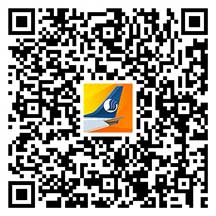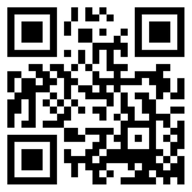- 精确查询航班座位数及票价
- 快捷方便管理历史订单记录
Regulations and safety instructions of dangerous goods carried
Note: Substances classified as dangerous goods carried must be for personal use in travelling and must be formal products. And once exceeding the standard and the quantity for self-use, they shall be prohibited to be carried. If you have any questions or special requirements, please call 95369.
| No. | Name | Prior application and approval are required | Checked baggage | Carry-on baggage | Restriction regulations |
| 1 | Equipments led to incapacity (e.g. mace gas, pepper spraying equipment, etc.) | FORBIDDEN. | |||
| 2 | Electro shock weapons (e.g. Taser) | FORBIDDEN. | |||
| 3 | Lithium Battery-Powered Lighters | FORBIDDEN. | |||
| Battery-powered lighters powered by a lithium ion or lithium metal battery (e.g. laser plasma lighters, tesla coil lighters, flux lighters, arc lighters and double arc lighters) without a safety cap or means of protection against unintentional activation. | |||||
| 4 | Electric self-balancing vehicles | FORBIDDEN. Lithium-battery-powered single or multi-wheel mobility aids, including but not limited to twist bike, somatosensory bike, segway, electric skateboard, etc. | |||
| 5 | Lithium batteries with possible safety defects | FORBIDDEN. | |||
| Lithium battery that is recalled by its manufacturer due to safety defect and has unclear marking and can't define the Watt-hour rating and lithium metal content. | |||||
| 6 | Small oxygen cylinders and gas cylinders for medical purposes | FORBIDDEN. | |||
| 7 | Security-type attaché cases/cash boxes/bags (with theft and robbery design, containing lithium batteries and pyrotechnic devices) | FORBIDDEN. | |||
| They can be transported when meeting the following conditions: being provided with an accidental activation prevention equipment, with the weight of lithium battery of no more than 2g or the capacity thereof of no more than 100Wh, and with the volume of a non-flammable and non-toxic gas cylinder of no more than 50ml, and the risk of accidental activation is limited inside the equipment and there must be no extreme noise. Defective or damaged articles and articles beyond the standard are prohibited to be transported. | |||||
| 8 | Self-heating food | FORBIDDEN. | |||
| Self-heating food refers to packaged food that utilizes a substance inside a heat pack to react with water, releasing heat and causing the food in the upper compartment to absorb the heat and increase in temperature. It is also known as self-warming or self-cooking food. | |||||
| 9 | Ammunition, securely packaged | √ | √ | Ammunition (in Division 1.4s, UN0012, or UN0014 only), in quantities not exceeding 5 kg (11lb) gross weight per person for that person’s own use, excluding ammunition with explosive or incendiary projectiles.Ammunition exceeding the allowance must be carried as cargo and the check-in formality shall be completed at the cargo department. | |
| Except Division 1.4S (only UN0012 or UN0014) ammunition, any other explosives are prohibited in baggage, such as articles, signal pyrotechnic, flash bomb, explosive toy, etc. may not be carried in baggage. | |||||
| Ammunition allowed carrying by two or more passengers or crew may not be combined to one or a few of packages. | |||||
| NOTOC (baggage) shall be completed. | |||||
| Note: It shall comply with the related State’s restrictions and regulations, which may be more | |||||
| rigid and for safety consideration. | |||||
| 10 | Camping Stoves and Fuel Containers that have Contained a Flammable Liquid Fuel | √ | √ | Camping stoves and fuel containers that have contained a flammable liquid fuel shall be handled as follows to eliminate the danger and may be carried as checked baggage only after agreed by the carrier: (1) The empty fuel tank and/or container must be allowed to drain for at least 1 hour, the fuel tank and/or container must then be left uncapped for a minimum of 6 hours to allow any residual fuel to evaporate. Alternative methods, such as adding cooking oil to the fuel tank and/or container to elevate the flash point of any residual liquid above the flashpoint of flammable liquid and then emptying the fuel tank and/or container, are equally acceptable. (2) The fuel tank, and/or container must then have the cap securely fastened and be wrapped in an absorbent material such as paper towel and placed in a polyethylene or equivalent bag. The top of the bag must then be sealed or gathered and closed with an elastic band or twine. | |
| 11 | Luggage case with lithium batteries | FORBIDDEN. Non-removable batteries with the lithium metal content of more than 0.3g or rated energy of more than 2.7 Wh. | |||
| √ | √ | Non-removable batteries with the lithium metal content of no more than 0.3g or rated energy of no more than 2.7 Wh are recommended to be transported as carry-on baggage in cabin. | |||
| Removable batteries can be transported as carry-on baggage in cabin. If checking baggage for carriage, lithium batteries must be taken out of the baggage, and then be put into the cabin for transportation. | |||||
| 12 | Electric mobility aids with sealed batteries (shall only be carried by passengers with limited mobility due to disability, health or age, or temporary action problems.) | √ | √ | Batteries cannot contain free and unabsorbed liquids. The electrode shall be insulated to prevent accidental activation and the battery is well fixed on the device. It is recommended that passengers explain the situation and make advance arrangements with each operator if the trip involves more than one carrier. | |
| 13 | Electric mobility aids with unsealed batteries (shall only be carried by passengers with limited mobility due to disability, health or age, or temporary action problems.) | √ | √ | 1. If a wheelchair can always be operated and transported in an upright manner, batteries can be installed on the wheelchair. The wheelchair must be ensured to be powered off. The batteries shall be protected against short circuit (such as sealed in a battery box) and firmly fixed on the wheelchair. | |
| 2. If the wheelchair cannot always be operated and transported in an upright manner, the battery must be removed for short-circuit protection and erected into a sturdy rigid packaging. The packaging must be tight and leak-proof to prevent leakage of the battery liquid. The adsorbing material is filled therein so that it can fully absorb the liquid contained in the battery. The packaging must be fixed in the unit load device or cargo hold to prevent it from tipping over, and marked with "BATTERY, WET, WITH WHEELCHAIR (轮椅用电池, 湿的)" or "BATTERY, WET, WITH MOBILITY AID" (助行器用电池,湿的) on the outside of the packaging and labelled with the "corrosive" and the “packaging direction" labels.It is recommended that passengers explain the situation and make advance arrangements with each operator if the trip involves more than one carrier. | |||||
| 14 | Electric mobility aids with lithium ion batteries (shall only be carried by passengers with limited mobility due to disability, health or age, or temporary action problems.) | √ | √ | The batteries must meet the requirements of each test in section 38.3, Part III, UN Manual of Tests and Criteria. The electrodes must be protected against short circuit, for instance, the battery is placed in a battery box, the circuit is closed, and the battery is firmly installed on an electric wheelchair or mobility aids. The mobility aids shall be protected against accidental activation during transportation. | |
| √ | √ | The batteries must meet the requirements of each test in section 38.3, Part III, UN Manual of Tests and Criteria. The battery must be removed when it is designed to be removable, and then brought into the cabin for transport after being insulated and permitted. The capacity of battery removed from the mobility aids shall not exceed 300Wh. Spare batteries with the capacity of no more than 160Wh shall not exceed 2, and spare battery with the capacity of no more than 300Wh shall not exceed 1. | |||
| 15 | Mercury barometers or mercury thermometers | √ | √ | Each representative of the China Meteorological Administration or similar institutions can carry one mercury barometer and mercury thermometer. | |
| The barometer or thermometer must be packed in a strong outer packaging, having a sealed inner liner or a bag of strong leak-proof and puncture-resistant material impervious to mercury, which will prevent the escape of mercury from the package irrespective of its | |||||
| position. | |||||
| 16 | Avalanche rescue backpacks | √ | √ | √ | Each person can carry one avalanche rescue backpack with one gas cylinder containing gas specified in item 2.2. The avalanche rescue backpack can also contain pyrotechnic devices containing substances specified in item 1.4s with a net weight of no more than 200 mg. The packing of such backpack should be protected against accidental activation and the airbag in the backpack must be equipped with a pressure relief valve. |
| 17 | Solid carbon dioxide (dry ice) | √ | √ | √ | The weight of dry ice used for preserving perishable foods shall be no more than 2.5 kg (5 pounds) per passenger. They can be carried as carry-on baggage, and the package should be provided with an air hole; and they can also be carried as checked baggage with the aforehand permission of the transport contractor. The baggage should be marked with “carbon dioxide” or “dry ice” and the net weight or weight of dry ice of no more than 2.5 kg. |
| 18 | Chemical agent monitoring equipment | √ | √ | √ | Equipment with small amounts of radioactive substances carried by staffs of the OPCW for public affairs. This equipment should have a sturdy packaging and must not contain lithium batteries. |
| Note: “OPCW-Organisation for the Prohibition of Chemical Weapons” | |||||
| 19 | Small non-flammable gas cylinders | √ | √ | √ | Each passenger can carry 2 automatic ventilating life-saving equipment and ensure that it is not accidentally triggered, and the automatic ventilating life-saving equipment contains at least two inflators with gas specified in item 2.2, and two spare inflators can also be carried. As for other equipment, inflators with the water capacity of less than 50 ml should be no more than 4. The gas contained in the cylinder shall be limited to carbon dioxide, or other appropriate gases within Division 2.2 that do not contain minor hazards. |
| 20 | Aerosol for sports or household use | √ | Non-flammable and non-toxic gas only. The net weight of each singleton is less than 0.5kg or the volume of each singleton is less than 0.5L. The aerosol relief valve must be protected against accidental release. Each person shall carries cosmetics, non-radioactive drugs and sport/household aerosols without secondary risk of no more than 2L or 2kg. | ||
| 21 | Non-radioactive pharmaceuticals or cosmetics (including aerosol) | √ | √ | e.g. hair spray, perfume, Cologne and medicines containing alcohol. The total net weight of “non-radioactive pharmaceuticals or cosmetics” carried by each passenger or flight crew shall be less than 2 kg or 2 L, and the net weight of each single article shall be less than 0.5 kg or 0.5 L. Aerosol must be protected against accidental release of the contents by a cover or in other appropriate means. Note: Due to security reasons, some countries may have stricter restrictions and regulations on such items. Please comply with their regulations and requirements. | |
| 22 | Alcoholic beverages | √ | √ | The volume concentration of alcoholic beverages packed in retail packaging should be greater than 24% but less than 70%, the volume of each container thereof should be no more than 5 L, and the total volume thereof should be no more than 5 L per person. Alcoholic beverages shall not be placed in carry-on baggage or carried on board, except for duty-free goods purchased in the isolation area of the terminal building or on board, provided that there are shopping vouchers and confirmed by security inspection.Alcoholic beverages with an alcohol concentration of 24% or less are not subject to any restrictions. Note: Due to security reasons, some countries may have stricter restrictions and regulations on such items. Please comply with their regulations and requirements. | |
| 23 | Energy saving lamps | √ | √ | Energy saving lamp with retail packaging for personal or household use. | |
| 24 | Fuel cells and spare fuel cell boxes | √ | Charging portable electronic equipment (e.g. camera, mobile phone, notebook computer and portable video camera). Fuel cells are prohibited from consignment. Spare fuel cell boxes can be consigned, no more than 2. Fuel cells for charging batteries of the equipment only are prohibited to be carried by passengers. For more details, please refer to Shandong Airlines. | ||
| 25 | Hair styling equipment with hydrocarbon gas tank | √ | √ | Each passenger or crew member can take a maximum of 1 equipment; (3) The equipment is allowed to be transported as carry-on baggage or checked baggage (unless otherwise required by local security inspections); (4) It is forbidden to transport spare gas tank as carry-on baggage or checked baggage; (5) It is forbidden to use the equipment on the aircraft. Note: Due to security reasons, some countries may have stricter restrictions and regulations on such items. Please comply with their regulations and requirements. | |
| 26 | Thermal insulation packing with frozen liquid nitrogen | √ | √ | Liquid nitrogen shall be absolutely absorbed by porous materials, articles inside shall only be non-dangerous goods. | |
| 27 | Internal combustion engine or fuel cell engine | √ | 1. The engine is powered by a fuel that does not meet the classification criteria for any class or division; | ||
| 2. The fuel tank of the vehicle, machine or other apparatus has never contained any fuel or the fuel tank has been flushed and purged of vapors and adequate measures taken to nullify the hazard; | |||||
| 3. The passenger has provided the operator with written or electronic documentation stating that the flushing, purging and filling procedure has been followed and; | |||||
| 4.The entire fuel system of the engine has no free liquid and all fuel lines are sealed or capped or securely connected to the engine and vehicle, machinery or apparatus. | |||||
| 28 | Mercury thermometers for healthcare or clinic use. | √ | Each passenger and flight crew can carry one putted in a protection box for personal use. | ||
| 29 | Gas cylinders with non-flammable, non-toxic gas. | √ | √ | Passengers can carry small gas cylinders for manipulating mechanical prosthetic limbs. Spare gas cylinders of the same size can also be carried by passengers for travelling. | |
| 30 | Non-Infectious Specimens | √ | √ | 1. Free flammable liquids sealed in specimens or alcohols in rigid containers shall not exceed 30mL; | |
| 2. Put the specimens into a plastic bag and heat-seal it, and then put the specimen bag into an another plastic bag with adsorbing materials and heat-seal it; and put a packed bag into a strong external packing with appropriate gasket materials; | |||||
| 3. The total volume of flammable liquids contained in the external packing shall not exceed 1L, and the term “scientific specimens, without restriction, applicable to the special provision A180 of the Dangerous Goods Regulations” shall be marked. | |||||
| 31 | Permeation equipment | √ | Restrictions on permeation equipments are: compatibility of materials of the equipment, internal and external packing, total limit, compression resistance durability, drop test, packing stacking height and gross weight of complete package, etc., please consult Shandong Airlines for specific detailed restrictions. | ||
| 32 | Portable electronic equipment with leak-proof batteries | √ | √ | Free or unabsorbed liquid shall not be contained therein; the battery voltage shall be less than 12V and the rated energy shall be less than 100Wh. One passenger has a maximum of two spare batteries; each battery must be protected against short circuit by means of electrode insulation. | |
| 33 | Radioactive isotope cardiac pacemakers | √ | including a cardiac pacemaker with lithium batteries implanted in vitro or in vivo, and radiopharmaceuticals in vitro for treatment. | ||
| 34 | Lithium-battery-powered electronic equipment | √ | √ | √ | The batteries must meet the requirements of each test in section 38.3, Part III, UN Manual of Tests and Criteria. Portable electronic equipment (including medical electronic equipment) with lithium ion batteries of the rated power exceeding 10Wh but not exceeding 160Wh and portable medical electronic equipment with lithium metal battery of the lithium content exceeding 2g but not exceeding 8g are recommended to be transported as carry-on baggage. For instance, during transport, the equipment in baggage must be turned off and protected against damage(can not be in sleep mode or dormancy mode). |
| 35 | Spare batteries of lithium-battery-powered electronic equipment | √ | √ | The batteries must meet the requirements of each test in section 38.3, Part III, UN Manual of Tests and Criteria. Spare lithium ion battery of the rated power exceeding 100Wh but not exceeding 160Wh and spare lithium metal battery of the lithium content exceeding 2g but not exceeding 8g shall be carried as carry-on baggage, with a maximum of two. | |
| 160Wh ≥ Charge Pal >100Wh | |||||
| 36 | Portable electronic equipment (including medical electronic equipment) | √ | √ | Lithium ion batteries of the rated power not exceeding 100Wh and lithium metal batteries of the lithium content not exceeding 2g are recommended to be carried as carry-on baggage. For instance, during transport, the equipment in baggage must be turned off and protected against damage (can not be in sleep mode or dormancy mode), unless the device contains only lithium-ion batteries with an energy capacity value of no more than 2.7Wh or lithium-metal batteries with a lithium content of no more than 0.3g. Each person can carry up to 15 portable electronic equipment, including equipment with built-in lithium batteries and other types of batteries. The following electronic cigarettes and luggage cases are also included therein. | |
| 37 | Electronic cigarettes | √ | Electronic cigarettes (including electronic cigars or other vaporizers) with batteries for personal use are regarded as portable electronic equipment and must be carried in carry-on baggage. | ||
| 38 | Spare batteries of portable electronic equipment | √ | Including lithium batteries, dry batteries, NI-MH batteries and sealed batteries. Spare lithium ion batteries of the rated power not exceeding 100Wh and spare lithium metal batteries of the lithium content not exceeding 2g must be carried as carry-on baggage. Each passenger can carry up to 20 spare batteries, including lithium batteries and other types of batteries; Each passenger or crew member may carry up to 8 spare lithium batteries (spare battery for portable medical device is not limited by this provision). Sealed batteries: the voltage shall not exceed 12V and 100wh, and each person shall carry a maximum of 2 spare batteries. | ||
| Charge Pal ≤100Wh | √ | And they shall not be used on the aircraft, and shall be forbidden to be consigned. Watt-hour reduction formula: Wh=V*Ah. All batteries shall be formal products with standard electric capacity, specification and manufacturer information. | |||
| 39 | Other unlisted dangerous goods and articles with safety and quality defects or whose nature and standard cannot be confirmed through inspection shall not be carried. | ||||
| 40 | It is forbidden to use packaging containers with labels related to dangerous goods. | ||||
Note:
1. This regulation is based on the relevant regulations of ICAO, IATA and CAAC, and is added to the safety requirements and aircraft type differences of the Shandong Airlines. Please note the renewal and change.
2. Passengers or flight crews can not carry dangerous goods in their carry-on baggage, checked baggage and carry-on items unless the conditions listed in the form are met.
3. Dangerous goods allowed in carry-on baggage are also allowed to be carried around unless otherwise specified.
4. Some airport security inspection departments may restrict certain articles and the quantity and standards thereof based on relevant regulations and requirements of safety level of the national security unit. If necessary, please consult the security inspection department of the departure station for confirmation.
5. If there are subsequent connecting flights of other airlines, please note the differences in restrictions between Shandong Airlines and other airlines. If necessary, please advise in advance.
6. For international flights, please note the differences in restrictions between different countries and/or regions.
7. If you have special needs, please apply to the airline for evaluation.
8. Once articles carried by passengers pose safety risks on the aircraft, the airline’s home country shall not take any responsibility for the damage caused due to the emergency handling, and shall reserve the right to investigate and affix legal liability on the consequence caused by passengers.





